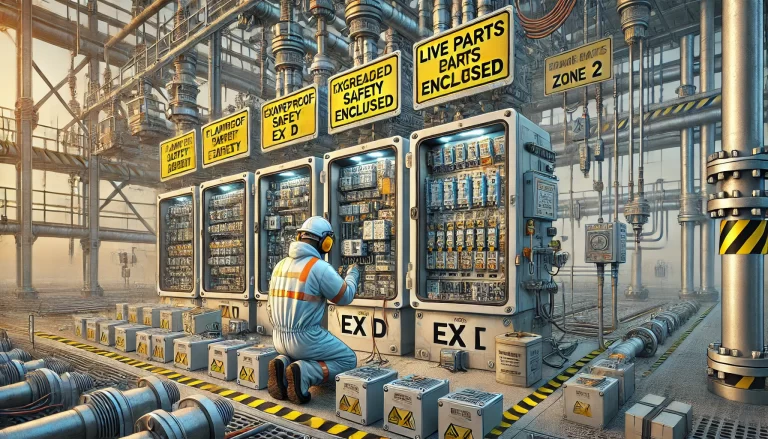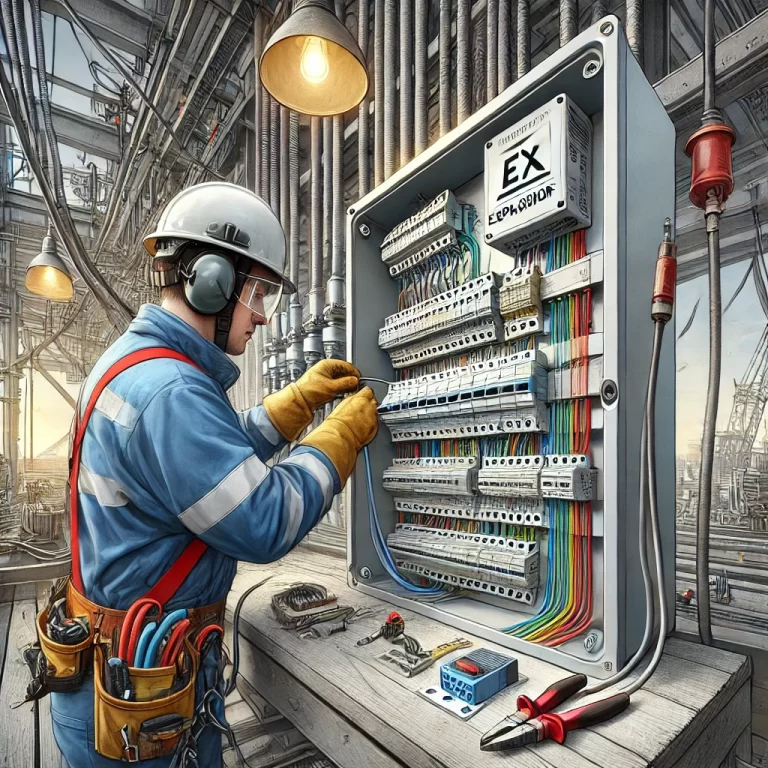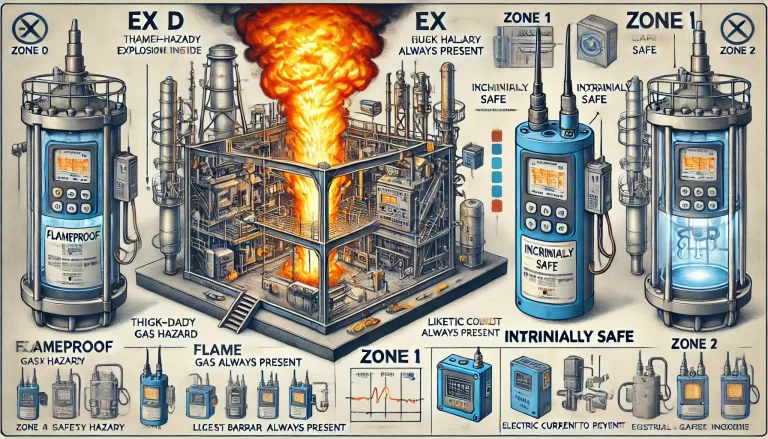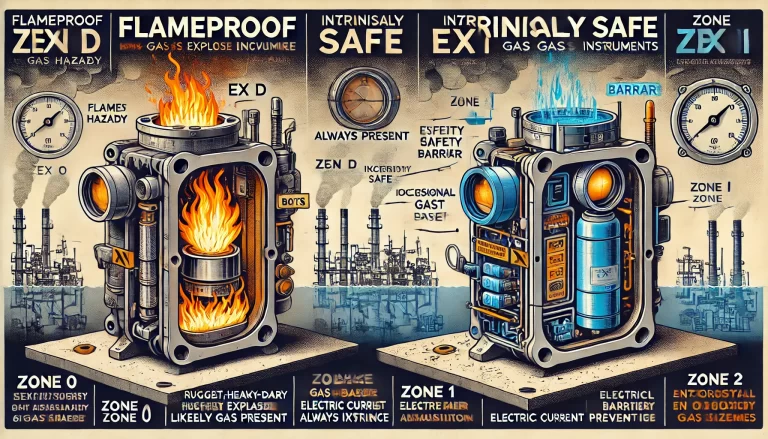Explosion protection is a critical consideration in hazardous industrial environments, especially in sectors such as petrochemicals, mining, and gas processing. Among the various protection methods, flameproof (Ex d) and intrinsically safe (Ex i) designs are the most widely used approaches in industrial instrumentation. Though both serve the same purpose — preventing explosions — they are fundamentally different in principles, construction, and applications.
This article explores the key distinctions between flameproof and intrinsically safe instruments in a clear, structured format.
1. Explosion Protection Fundamentals
Explosion-proof designs aim to prevent ignition of flammable gases or dust present in the environment. There are two main strategies:
Containment (Flameproof): Allow ignition inside the enclosure but prevent the flame from propagating to the outside.
Prevention (Intrinsic Safety): Ensure that ignition cannot occur by limiting electrical and thermal energy.

2. What Is a Flameproof (Ex d) Instrument?
● Definition
A flameproof enclosure is designed to withstand an internal explosion and prevent the transmission of the explosion to the external environment.
● Working Principle
If flammable gases enter the enclosure and ignition occurs, the robust housing contains the explosion. Special flame paths (narrow gaps and long flameproof joints) reduce the temperature and pressure of the escaping gases to levels that cannot ignite surrounding gases.
● Structural Requirements
High mechanical strength of the enclosure
Tight tolerances for flameproof joints (length and clearance)
Heavier and bulkier construction
● Application Zones
Suitable for Zone 1 and Zone 2 hazardous areas
Not permitted in Zone 0 due to the possibility of internal explosions

3. What Is an Intrinsically Safe (Ex i) Instrument?
● Definition
An intrinsically safe circuit is one that cannot release sufficient energy (either electrical or thermal) to cause ignition under normal or fault conditions.
● Working Principle
By limiting the voltage, current, and stored energy in the circuit, even in fault scenarios, the system ensures that no spark or hot surface can ignite a hazardous atmosphere.
● System Requirements
Use of safety barriers (installed in the safe area)
Cables, terminals, and components marked in light blue to indicate intrinsic safety
Energy levels must stay below the Minimum Ignition Energy (MIE) and autoignition temperature of the surrounding gases (e.g., Hydrogen: 19 µJ, 560°C)
● Application Zones
Ex ia: Can be used in Zone 0, 1, and 2
Ex ib: Suitable for Zone 1 and 2
Ex ic: Limited to Zone 2 applications only

4. Key Differences Between Ex d and Ex i
| Aspect | Flameproof (Ex d) | Intrinsically Safe (Ex i) |
|---|---|---|
| Explosion Handling | Allows internal explosion, contains it | Prevents explosion by limiting energy |
| Construction | Heavy, thick-walled enclosure | Lightweight, low-power design |
| System Design | Standalone protection | Requires system integration (safety barrier + Ex i device) |
| Maintenance | May require special procedures to open/inspect | Can be maintained live with proper tools |
| Installation Area | Zone 1 and 2 | Ex ia: Zone 0, 1, 2; Ex ib: Zone 1, 2; Ex ic: Zone 2 only |
| Cost Consideration | Higher manufacturing cost (materials, machining) | Lower device cost but higher system design effort |
5. Typical Use Cases
Flameproof Instruments:
Motors, junction boxes, switches
Heavy-duty sensors with high energy demand
Intrinsically Safe Instruments:
Pressure/temperature transmitters
Flow sensors and data loggers
Portable instruments and handheld devices

6. Conclusion
Both flameproof and intrinsically safe protection methods serve critical roles in explosion-proof system design. The choice depends on several factors, including the hazardous zone classification, device energy levels, maintenance needs, and cost efficiency.
For Zone 0 environments, intrinsic safety (Ex ia) is the only allowable protection type.
In Zone 1 and 2, both options are viable depending on equipment size, power, and complexity.
For modern instrumentation and low-power devices, intrinsic safety is increasingly favored due to its compact design and ease of maintenance — provided that system integration (e.g., safety barriers) is properly managed.
